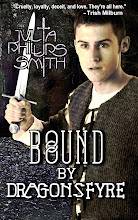
Welcome to my first Through the Opera Glasses post. Why a visual aid feature, you may ask? But my dear, anyone who was anyone carried their opera glasses to the theatre once upon a time. "Opera glasses were used as much for pretentious display or to look at your neighbours (perhaps the goings on in a box) as for viewing the stage." (The College of Optometrists) And in this new feature, I'm going to take a look at The Arts in all their myriad splendour.
My post this week takes a look at the coded language of slave songs and their use by the Underground Railroad. I find this particularly moving this month as Barack Obama was sworn in as President of the United States of America.
The culture of the previous president showed his clear bias against anyone who used bigger words than he could. The Bush Administration attempted to limit free speech by making any dissent un-American. He ran a campaign on education, then two years later made $30 million in cuts to arts funding, affecting the National Endowment for the Arts and all school arts programs. Any conservative politician worth his salt knows that by demonizing the 'Liberal media', actual news will be passed over by loyal folk who wouldn't dream that their leader could be doing anything underhanded.
Canada's current Conservative Prime Minister, Stephen Harper, has had a poisoned relationship with the media for years. He actually lost a majority three months ago after his infamous statement: "I think when ordinary working people come home, turn on the TV and see a gala of a bunch of people at, you know, a rich gala all subsidized by taxpayers claiming their subsidies aren't high enough, when they know those subsidies have actually gone up – I'm not sure that's something that resonates with ordinary people." (Julia's note: I thought Harper fancied himself as a wiley strategist, but a proposed $45 million in arts cuts doesn't equal subsidies going up. But that's just silly old me.)
So there I was, watching the inauguration of President Obama, listening to the glorious strains of cellist Yo-Yo Ma, violinist Izhak Perlman, pianist Gabriella Montero and clarinetist Anthony McGill as they performed. And later that evening I went to choir rehearsal where we worked on a spiritual for our spring concert, Every Time I Feel The Spirit. Once a slave signal song for riders of the Underground Railroad, I thought just how powerful the arts really are. And no amount of George W. Bushes or Stephen Harpers can stop the arts from giving the people their voice - especially when it's at the gravest risk of being strangled.
The root of the slave spiritual as a signal song has its genesis across the sea and back through time, in African culture. "A change in perceptual alignment is needed in order to understand the role of the creative in African ritual music. The aesthetic that 'allows for meaning' in African culture does not recognize the divisions that underlie western assumptions of 'aesthetic-integration'.
(Julia's note: one concrete meaning cannot be assigned to African symbolism, because these symbols always carry multiple messages between the performer and the listener. As an example, the term 'father' automatically carries multiple meaning: it can be a daddy, a patriarchy or God. In an African sensibilty, a symbol may have three more added layers yet again, that are clear to the observer due to shared experience. In the same way that a jazz player will take a musical idea and riff on it as opposed to playing the written notes, the initial message is received - the melodic line - but a deeper dialogue begins between the players and the audience when improvisation begins.)
"The subject of African ritual music is not seen by Africans as a separate subject that can be isolated from the composite event in which it takes place. The challenge (for westerners) with African creative language, as it relates to symbolic participation, involves:
1) the use of musical language as a composite phenomenon that is 'trans-idomatic' (or 'across, over, or beyond' 'a distinct style or character')
2) the use of musical 'signals'
3) the mythological backdrop that defined the 'myth-relationships' that are reenacted in a given ceremony.
"African 'awareness of historical complexities' forms a means to maintain cultural harmony and balance. Ritual structure becomes the basis to pass on cultural belief. This phenomenon is part of the 'checks and balances' of the African aesthetic." (Anthony Braxton, musician, composer, philosopher and Wesleyan University professor)
This is a traditional dance from Zimbabwe recorded in 2001 by YouTube user MLBinwa. You can hear the musical roots of plantation work songs in this piece, as well as the signals the performers use between themselves and the audience. These include the African call-and-answer rhythm, whistles, changes in rhythm, changing from words to humming, calling with a horn, clapping sticks and eye contact - all of these signal the next part of the piece to one another, as well as layered meaning about the importance of the newly-introduced subject matter.
The tone and rhythms of the traditional African style was transferred to North American plantation work songs and spirituals. In the African symbolism inherent in this music, what may have seemed like an energetic work song may have had its roots in a tribal war chant. This allowed slaves a form of artistic protest.
This next piece is a prison work song recorded in 1947 at the Mississippi State Penitentiary by a prison work gang. It's easy to hear the same call-and-answer form of the Zimbabwe song, as well as the incorporation of the work rhythm into the music. It's interesting how a few seconds of silence are repeated between every call-and-answer section.
In keeping with the history of African cultural use of multi-layered symbolism in their music, here is an excerpt from Harriet: The Moses of Her People, a biography of Harriet Tubman, one of the most famous 'conductors' of the Underground Railroad. Her response to news of her imminent sale to another owner was to use the coded language of the slaves embedded within spiritual hymns.
"One day there were scared faces seen in the negro quarter, and hurried whispers passed from one to another. No one knew how it had come out, but someone had heard that Harriet and two of her brothers were very soon, perhaps today, perhaps tomorrow, to be sent far South with a gang, bought up for plantation work. Harriet was about twenty or twenty-five years old at this time, and the constantly recurring idea of escape at sometime, took sudden form that day.
Willing to start that very night for that far North, where, could she reach it in safety, freedom awaited; but she must first give some information of her purpose to the friends she was to leave behind. Slaves must not be seen talking together, and so it came about that their communication was often made by singing, and the words of their familiar hymns, telling of the heavenly journey, and the land of Canaan, while they did not attract the attention of the masters, conveyed to their brethren and sisters in bondage something more than met the ear. And so she sang, accompanying the words, when for a moment unwatched, with a meaningful look to one and another:
When that old chariot comes
I'm going to leave you
I'm bound for the promised land
Friends, I'm going to leave you
Again, as she passed the doors of the different cabins, she lifted up her well-known voice; and many a face appeared at door or window, with a wondering or scared expression; and thus she continued:
I'll meet you in the morning
When you reach the promised land
On the other side of Jordan
For I'm bound for the promised land"
- Sarah H. Bradford, Harriet: The Moses of Her People, 1886
Now we get to the spiritual that inspired this post. A spiritual is differentiated from a gospel song by the attribution of a known composer. Spirituals were composed by slaves whose names are lost in time but whose music reaches out to us through their intense explorations of humanity's relationship with God. Gospel songs do likewise, but their composers are attached to the music and lyrics.
Here is a traditional version of the lyrics, the same lyrics my choir will be singing. The clip shows a version that carries the same melody as the one I'm doing.
Every Time I Feel The Spirit
Every time I feel the spirit
Movin’ in my heart I will pray
Every time I feel the spirit
Movin’ in my heart I will pray
Up on the mountains my Lord spoke
Out of His mouth came fire and smoke
Looked all around me, it looked so fine
I asked the Lord could it be mine
Every time I feel the spirit
Movin’ in my heart I will pray
The Jordan river is chilly and cold.
It chills the body but not the soul.
There aint but one train upon this track.
It runs to heaven and then right back.
Every time I feel the spirit
Movin’ in my heart I will pray
Oh, I have sorrow and I have woe
I have heartaches here below
But while God leads me I’ll never fear
For I know that He is near
- Traditional spiritual
Victoria Soul Gospel Choir
The next clip is the exciting part. Recorded in 1952, this version has a slightly different melody. This is a perfect example of how the slaves would have used music to convey complex messages to their listeners.
The change in melody style would grab one's attention, an alert that a signal is being sent.
The call-and-answer format is altered by the succession of different singers picking up the song like a relay race.
The full text of the song is discarded.
Instead, the chorus is sung over and over, until 2/3 of the way into the song. At that point the only lyrics from any of the verses appears:
There aint but one train upon this track.
It runs to heaven and then right back.
A slave working next to the singer would continue on as if nothing untoward was happening, might even chime in to acknowledge the message was received. The overseer on horseback would only see slaves working and singing as was the norm. It was a Christian hymn, after all. What could be alarming in that?
But the power of the arts to change lives rang out in the dust of the cottonfields so many years ago. A slave escaped to Canada once again, demoralizing the Southern slave owners and crippling their economy one liberated person at a time.
Spirit of Memphis Quartet
Painting - In the Box - Mary Cassatt
Tuesday, January 27, 2009
Through the Opera Glasses - 1 - Every Time I Feel The Spirit
Posted by Julia Phillips Smith at 4:00 AM
Labels: Every Time I Feel The Spirit, Harriet Tubman, Mississippi prison work gang song, Spirit of Memphis Quartet, Traditional dance from Zimbabwe, Traditional spiritual, Victoria Soul Gospel Choir
Subscribe to:
Post Comments (Atom)




























4 comments:
What a thoughtful piece. Made me wonder whether the next book we're reading in my neighborhood book club (first session was the day of the inauguration!),'The Book of Negroes' by Lawrence Hill, will have references to spirituals. Mr.Hill was one of four prominent Canadians asked to comment on the content of the inaugural address the the newspaper edition the day after, so I'm now way down the list of people waiting to get it from the library...
Thought provoking piece, Julia. You take so much time and effort putting these together, I was thinking... This woman needs to write for a magazine.
What a very interesting post! I haven't checked out the music-links yet, but hopefully I will have time to do it later on.
I am very interested in American history and what you write about here is not something I have really thought about before. Thanks for taking the time to write and research all that for us.
We have the Danish equivalent to the Bush-administration ruling Denmark these years and what you wrote about the arts and making cuts in fundings etc. could have been written by me. In Denmark there is so much talk about how "people don't want to be told what is good taste and what is bad taste any longer by those academic and educated types from universities and left-wing newspapers no more", so these days arts are getting the cuts big times, museums must close or cut down a lot etc etc. Okay, I could go on about this, but I better stop here ;o)
Great post!
Very informative - congrats on your first "Through the Opera Glasses"! I enjoyed the videos.
Post a Comment